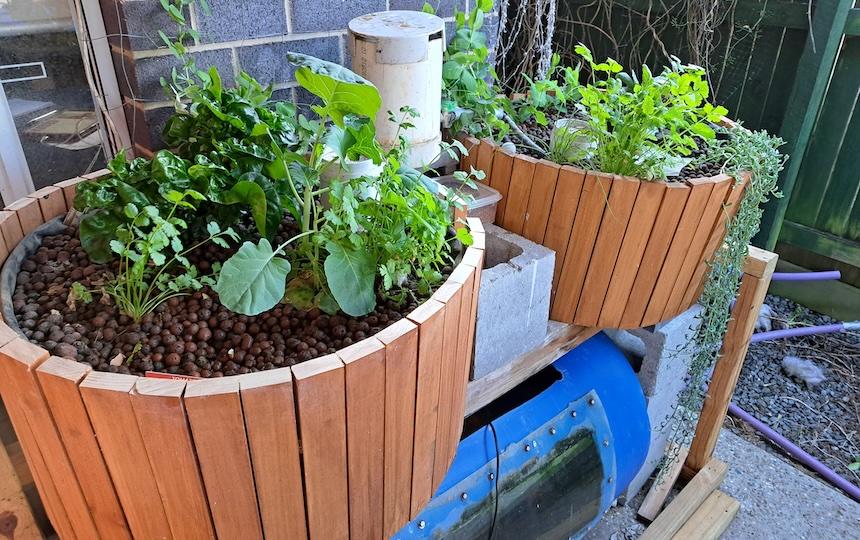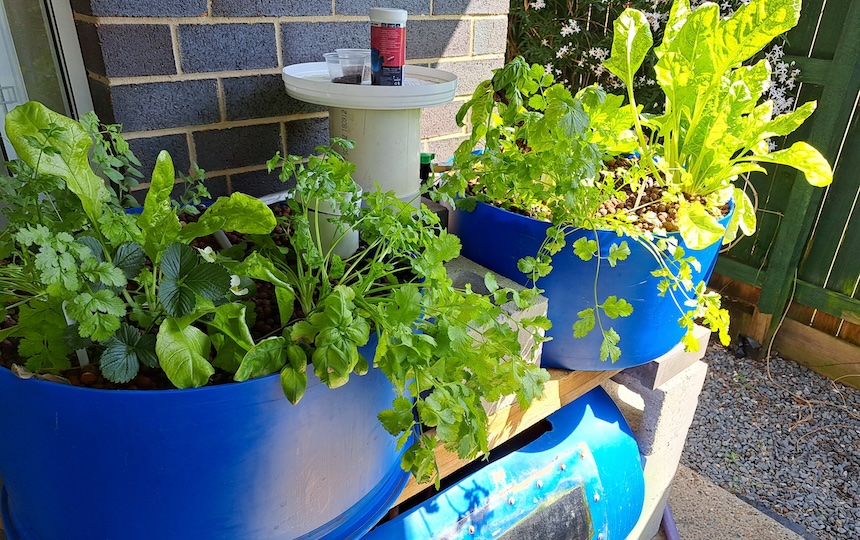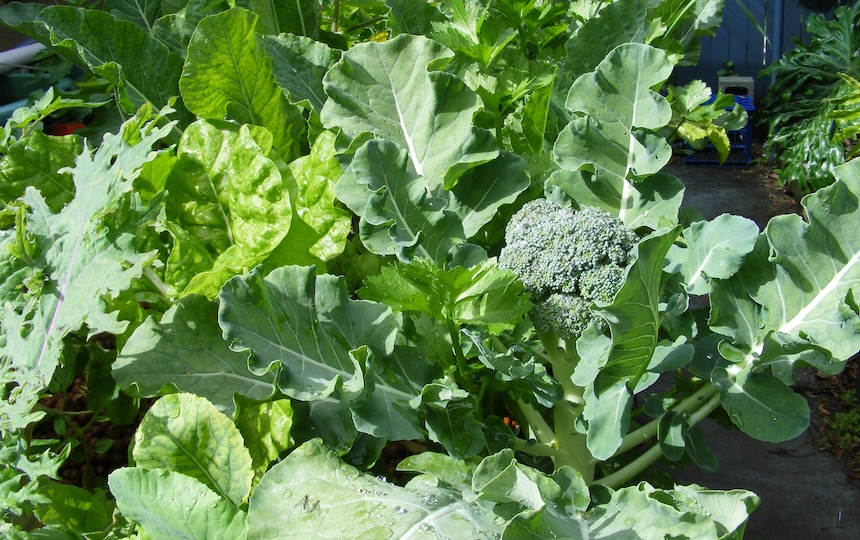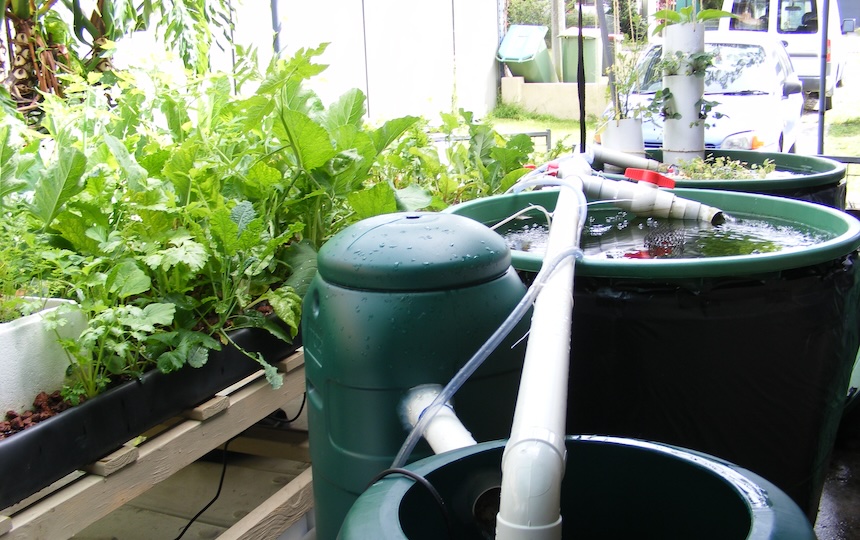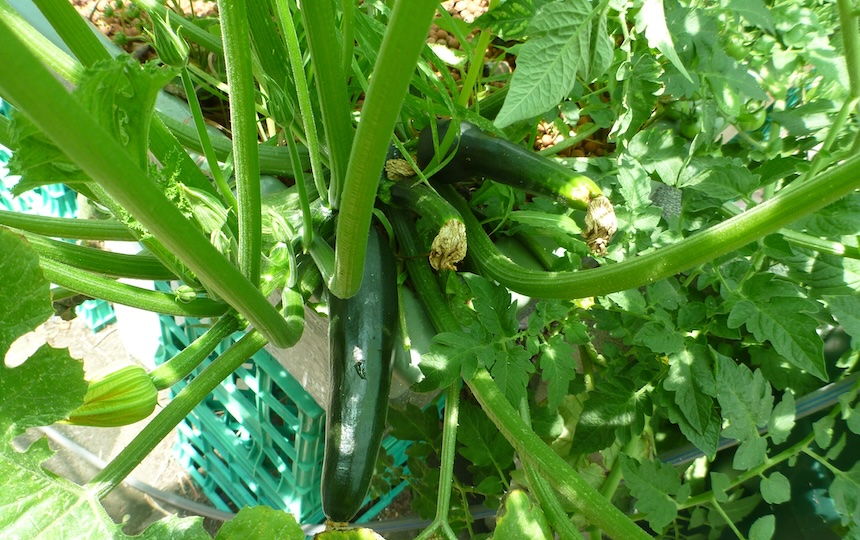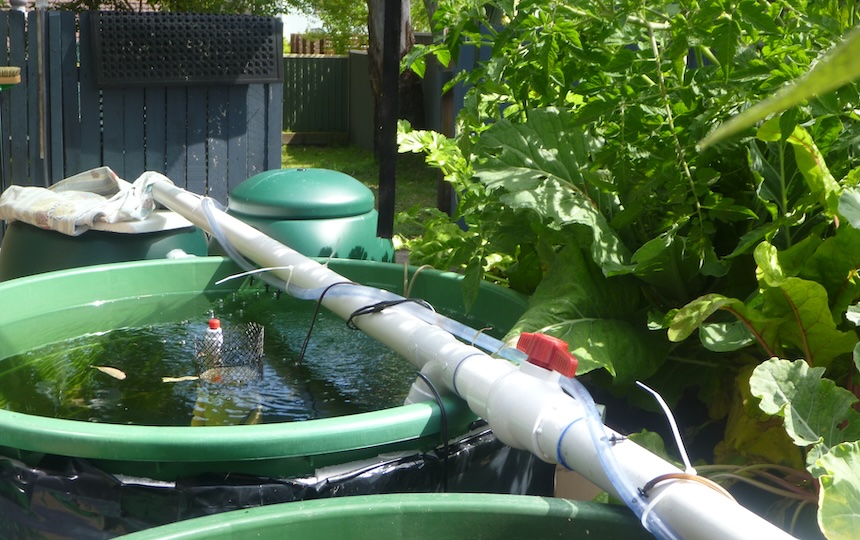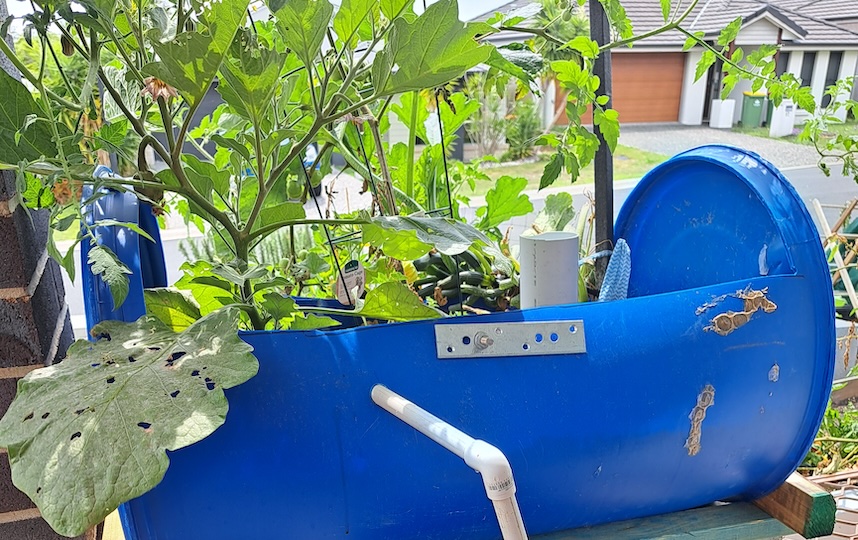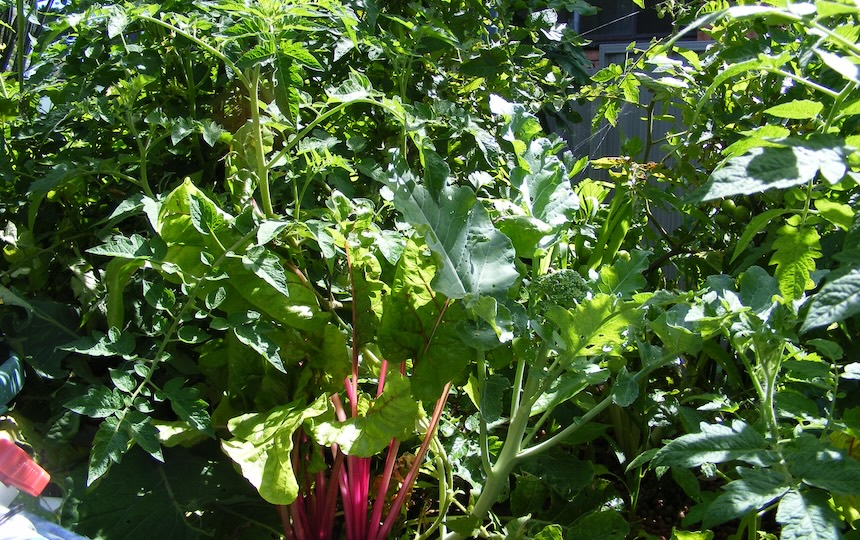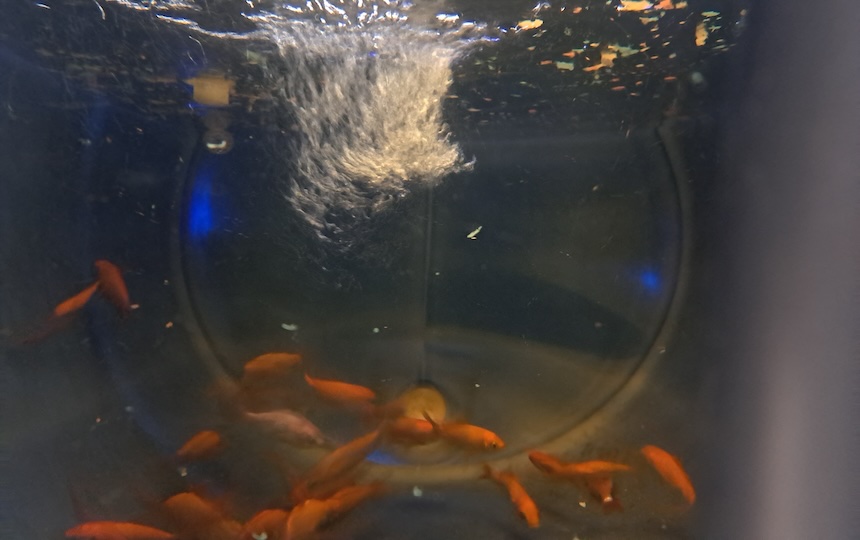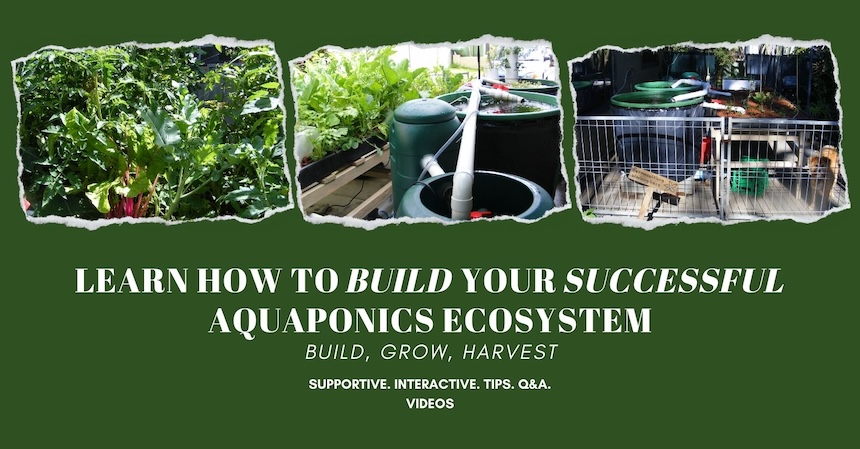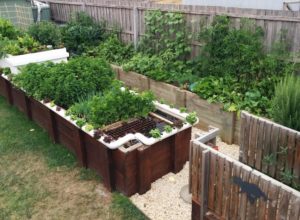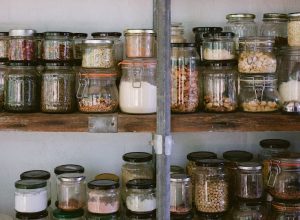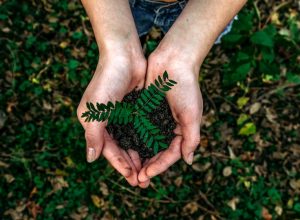This article is brought to you by Pip Magazine and The Aquaponics Lady.
Growing vegies and fish in a closed-loop aquaponics system can be a healthy, sustainable and low-maintenance way to grow food at home.
Less water usage
While it might sound hard to believe, aquaponics uses up to 10 times less water than soil-based gardening as the water is constantly recirculating throughout the system. Unlike hydroponics where you have to flush out the concentrated, salty nutrient solution, aquaponics has no waste impact on the environment.
Water flows consistently through the fish tanks, filters and vegie-growing areas where the nutrients (fish waste) are filtered out of the water, and the water is cleaned and moved back into the fish tanks. Another advantage is there’s no water runoff that can happen with soil gardens being watered.
Nutritional value
If you have poor soils and don’t have the time or means to improve it, or where your outdoor space is limited to hard surfaces, aquaponics is a perfect way to grow your own food. Instead of the plants drawing nutrients from the soil, nitrogen- and phosphorous-rich nutrients are provided by the fish living within the aquaponics system.
Vegetables and herbs grown in aquaponics are high in both nutritional value and flavour, two things which are nearly always missing from commercially farmed produce.
Zero food miles
Growing your own food within an aquaponics system ensures zero food miles. Food grown seasonally in your home or local community doesn’t have far to travel.
Having an aquaponics set up in your backyard means your food travels directly from your garden to your plate, cutting out the need for long-distance transport and the associated packaging.
And if you choose to grow fish for consumption within your aquaponics system you are also avoiding the impact of fish being shipped from across the globe for your consumption. And you are not stripping the rivers of fish, or damaging the ecosystem in any way. You are harvesting healthy fish from your backyard, from tank to table.
No chemicals
The very nature of aquaponics is that it is a balanced ecosystem where the fish produce waste (ammonia), that beneficial nitrifying bacteria convert into fertiliser for the vegies, and the vegies in turn filter the water for the fish. It’s all about balance.
This means that no synthetic fertilisers are needed for the health of the plants.
Pesticides cannot be used within aquaponics without harming the fish – and humans – meaning aquaponics is a chemical-free zone relying on companion planting, beneficial insects and natural pest-control methods.
Higher yields, faster
With constant water and fertiliser from the fish flowing through the system, the plants are not limited in their growing potential by the available nutrients, as can be the case with soil gardening. So depending on your climate, vegetables and herbs can be grown closer together within an aquaponics system which results in more produce – perfect if you are in an urban setting and limited by space.
Compared to growing in soil gardens, plants can grow up to four times faster because the plants have an uninterrupted supply of water and nutrients. The boost your soil-based vegies get by a nice soaking of rain is a 24/7 event for an aquaponics system.
An aquaponics system allows for food to be planted in a higher density, producing higher yields and at a faster rate.
No waste
A successful aquaponics system is a balanced ecosystem where everything has its place, and everything gets used. Because it’s a closed-loop system, the water is constantly recycling through the fish tank, the filters, the vegie-growing areas and back again, saving water and not losing any of the nutrients produced by the fish.
Everything plays a part; the fish produce liquid ammonia, which is converted by nitrifying bacteria into usable fertiliser. The plants use this fertiliser, which filters the water for the fish, and the cycle continues to flow.
There is no waste, and to make it even more sustainable, you can use recycled materials to build your aquaponics system, saving them from landfill.
Less work
While soil-based gardening has many enjoyable elements about it, all the work that needs to be done can feel daunting, especially to a beginner. Preparing beds, making compost, feeding soil, watering the garden, etc.
But once setup, aquaponics is a low-maintenance way to grow nutrient-dense food which is well suited to busy lifestyles. It is self-watering, self fertilising, rarely needs weeding, and you don’t have to feed and build soil at any stage through the growing season.
With the right design focusing on prevention and aquatic health, aquaponics can be an easy way to grow healthy food at home, especially if you start small to get a feel for how it works.
There’s a bit to learn at the beginning and it’s far from maintenance-free; as well as feeding the fish, you need to monitor the water temperature, the circulation, pH and nutrient levels, your pumps and, of course, the health of your fish. Though with practice and repetition, maintaining your aquaponics system becomes a quick and easy routine.
Renter friendly
If your landlord won’t allow you to build a soil-based vegie garden, aquaponics is a logical food-growing solution for renters because the systems are moveable and require no changes to the ground or property. And because you can take your aquaponics system with you when you move, it also means you can get your garden established at your new home almost immediately.
You choose the design, size and location of the system that works for your individual circumstances. It is great for small yards and courtyards, as well as people who live on acreage.
More resilient
As the climate changes we are experiencing more flooding, more risk of droughts and more potential for soil degradation. Soil-based gardens can be damaged with flooding water, whereas having an aquaponics system off the ground means that storms are less likely to affect your ability to grow your own food.
As water becomes more and more precious, growing food in an aquaponics system which uses less water than traditional soil-based gardening could be the next logical step in a sustainable future – especially in drought-prone areas or places that are hot, humid, experience water shortages or limitations based on rainfall.
Grow your own fish
A key component of aquaponics, which differentiates itself from hydroponics, is that the system uses fish to provide the nutrients for the plants, which can be grown for eating or kept as pets. This can be a great dual harvest, or for those who don’t want to eat the fish, they are great pets that provide incredible entertainment and relaxation, as well as ongoing fertiliser for your vegies.
Just like your homegrown vegetables, you know where your fish has come from, what conditions they’ve lived in, what they’ve been fed and that it’s super fresh. High in omega-3 and other healthy fats, growing your own fish is not only healthier for humans, but it’s better for planet, too.
Our native fish populations have decreased dramatically since colonisation due to a variety of factors including commercial fisheries, introduced species and people taking the large, breeding fish from our waterways the waterways. By growing your own, you are helping the environment, and know that everything about your aquaponics system is healthy and safe.
This article was brought to you by Candy, The Aquaponics Lady! She offers online courses about how to set up and maintain aquaponics systems for small spaces, teaching transferable skills for larger setups. From courtyard to DIY urban designs, learn aquaponics basics like system designs, water quality, fish health, filtration and how to maintain this ecosystem in any space.

